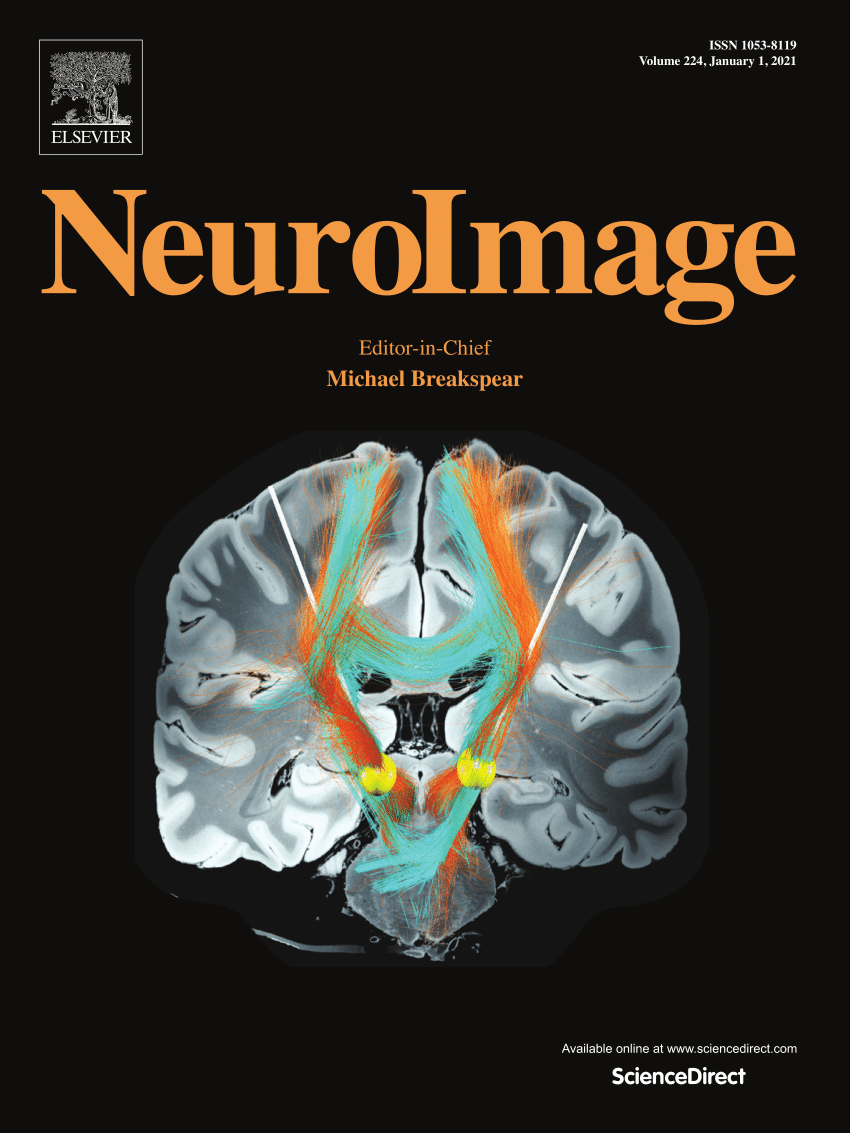探索幻觉倾向与大脑形态之间的关系
IF 4.7
2区 医学
Q1 NEUROIMAGING
引用次数: 0
摘要
背景:幻觉(包括听觉和视觉幻觉)通常与大脑结构的改变有关,特别是与语言有关的特定皮质区域。现有模型提出了不同的框架来理解脑容量与幻觉倾向之间的关系,但支持这些模型的实际证据却很有限:本研究调查了幻觉倾向与语言相关皮质区域(特别是颞上回和布罗卡区)脑容量之间的关系。共有68名参与者(主要是大学生)完成了劳内-斯莱德幻觉量表(LSHS),以评估听觉和视觉体验的幻觉倾向。结构性核磁共振成像扫描用于测量目标区域的脑容量:结果表明,LSHS评分与颞上回和布洛卡区的脑容量之间存在明显的正相关关系,而这两个区域以前曾与临床诊断的幻觉患者的脑容量减少有关。与很少或从未出现幻觉的人相比,出现听觉和视觉幻觉的高幻觉倾向者在这些语言区域表现出更高的脑容量:这些研究结果对现有模型提出了挑战,表明在非临床人群中,与语言相关的皮质区域的脑容量较高可能与听觉和视觉幻觉的发生率增加有关。这与临床幻觉患者的脑容量减少形成了鲜明对比,凸显了进一步研究大脑结构与幻觉体验之间复杂相互作用的必要性。本文章由计算机程序翻译,如有差异,请以英文原文为准。
Exploring the relationship between hallucination proneness and brain morphology
Background
Hallucinations, including both auditory and visual forms, are often associated with alterations in brain structure, particularly in specific language-related cortical areas. Existing models propose different frameworks for understanding the relationship between brain volume and hallucination proneness, but practical evidence supporting these models is limited.
Methods
This study investigated the relationship between hallucination proneness and brain volume in language-related cortical regions, specifically the superior temporal gyrus and Broca's area. A total of 68 participants, primarily university students, completed the Launay-Slade Hallucination Scale (LSHS) to assess hallucination proneness for both auditory and visual experiences. Structural MRI scans were used to measure brain volume in the targeted regions.
Results
The results indicated significant positive correlations between LSHS scores and brain volume in the superior temporal gyrus and Broca's area regions previously linked to volume reductions in patients with clinically diagnosed hallucinations. Participants reporting high hallucination proneness for both auditory and visual hallucinations exhibited higher brain volumes in these language areas compared to those experiencing hallucinations rarely or never.
Conclusions
These findings challenge existing models by suggesting that higher brain volumes in language-related cortical areas may be associated with increased proneness to both auditory and visual hallucinations in non-clinical populations. This contrasts with the volume reductions seen in patients with clinical hallucinations and highlights the need for further research into the complex interplay between brain structure and hallucinatory experiences.
求助全文
通过发布文献求助,成功后即可免费获取论文全文。
去求助
来源期刊

NeuroImage
医学-核医学
CiteScore
11.30
自引率
10.50%
发文量
809
审稿时长
63 days
期刊介绍:
NeuroImage, a Journal of Brain Function provides a vehicle for communicating important advances in acquiring, analyzing, and modelling neuroimaging data and in applying these techniques to the study of structure-function and brain-behavior relationships. Though the emphasis is on the macroscopic level of human brain organization, meso-and microscopic neuroimaging across all species will be considered if informative for understanding the aforementioned relationships.
 求助内容:
求助内容: 应助结果提醒方式:
应助结果提醒方式:


